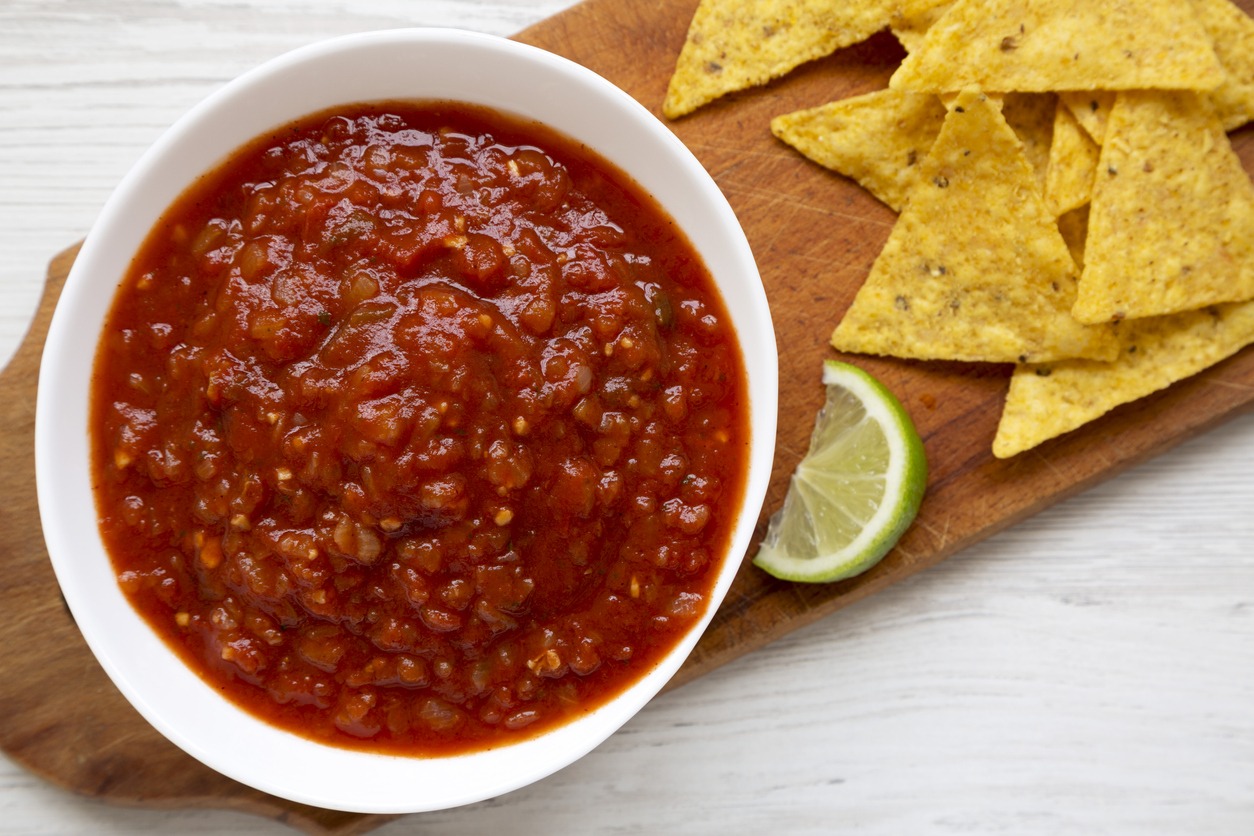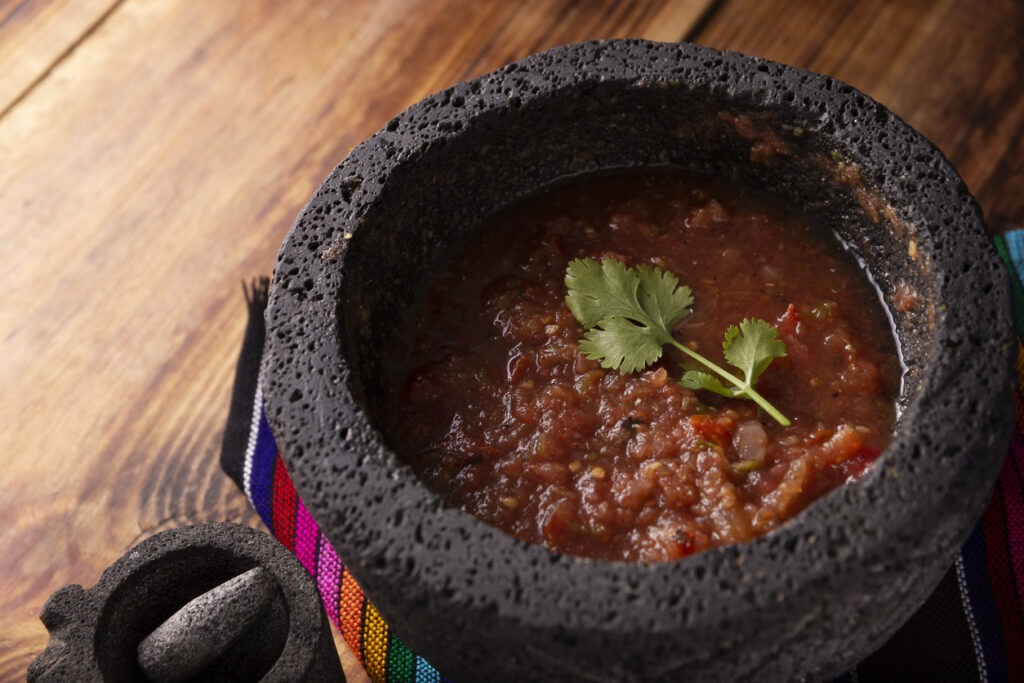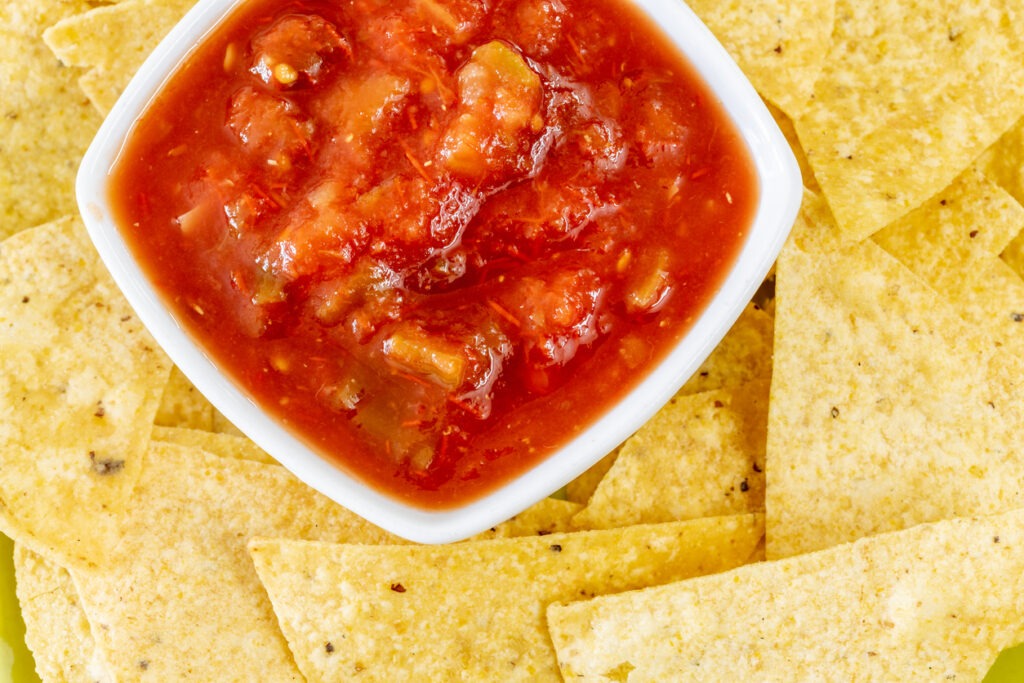The techniques and talents used in Mexican cooking have been refined over thousands of years, making it a famous and historical cuisine. Mexicans offer palatable dishes when it comes to preparing unique dishes and cuisines. From the preparation of food to the presentation, we have seen various new food items introduced now and then.
Many dishes from Mexico become distinct because of their sauces. Rather than meat or vegetable, Mexican cuisine becomes more noticeable through the spicy sauces and condiments that come along with them.
Salsa, a valuable sauce for a wide range of culinary items, including barbecue, is one of the best side dishes from Mexican culture. Let’s learn more about Salsa and how this sauce can improve our food preparation.
What is Salsa?
In Spanish terms, salsa refers to the sauce, so in many Spanish-speaking cultures, salsa is associated with any sauce. In other places, salsa refers to sauces used as toppings for tacos, dips for tortilla chips, and other Mexican and Mexican-American dishes. It is a common condiment served together with tacos, mixed into soups and stews, or even blended into tamale fillings. They are served at room temperature and can be eaten either raw or cooked.
Although many of us think of Salsa as a thick tomato and chili sauce, there are many distinct kinds of spices. Salsa first gained popularity in the 1980s, and since then, Americans have come to love eating it as a dip, as there are many different types of salsas to choose from. Salsa is also great for tortillas, chips, and burritos.
History of Salsa
The making of a sauce by mixing chilies, tomatoes, and other spices has been documented back to the Aztec culture. Salsa’s origins date back to the Aztec, Inca, and Mayan times. Native Americans created their version of Salsa using tomatoes, chili peppers, and pumpkin seeds, but Salsa wasn’t an “official discovery” until Spain conquered Mexico in the 16th century.
Along with America’s interest in Salsa, the popularity of hot sauces and spiciness has risen steadily since the mid-1800s, beginning in Texas and the Southwest. Salsa has become ubiquitous in American cuisine, and people stopped referring to it as “ethnic food.”
Things to Remember When Buying Salsa
1. Price
It’s natural for everyone to look at the price when buying anything, even with Salsa, but here’s another side of the coin. First, we need to assess the price difference between different brands. Next, you need to consider the price you pay for your Salsa and the costs you will spend if you make it at home.
To buy authentic Mexican Salsa, you should buy a Mexican brand. It may cost you more, but you get what people generally like when they want authentic Salsa.
Sometimes, the pricing is also dependent upon the flavoring. Some flavors tend to be cheaper, while others could be expensive, and this price difference is mainly because of the ingredients being used in them. Therefore, when comparing Salsa based on price, make sure you are using the same kind.
2. Homemade vs. Commercially Manufactured
Another aspect related to price and taste is whether the Salsa is cooked or purchased at the market. It’s not expensive, so many people buy it online. However, some believe that it is quite cheaper when made at home. Research data shows that homemade Salsa is 10 cents cheaper per ounce.
For example, a branded salsa may be priced at 0.83 an ounce, while if you make it at home, you might save 10 to 15 cents on every ounce. Sometimes, homemade Salsa will be cheaper, like 20 to 25 cents per ounce, if the branded Salsa is expensive.
3. Storage
Everyone must remember that Salsa has a shorter storage life than other sauces. Food experts only recommend to buy what you need. The unopened Salsa can usually be kept for 1.5 – 3 months at the maximum, while if you have an opened salsa, its life is further shortened to 1 – 2.5 weeks only. Keep in mind that Salsa requires refrigeration, so you should not be keeping it somewhere out, or it will expire in a matter of days – or the worst case, only a few hours.
4. Flavor
There are many different types of Salsa available in the market. There is chunky Salsa with a large tomato for those who like thick Salsa. On the other hand, roasted Salsa has a more cooked taste, unlike regular Salsa. Many salsas you find on the shelves would have chilies made on them, which indicates that these salsas are spicy, too. This kind of Salsa is also known as hot Salsa.
5. Nutritional Content
One central aspect of packed foods is the nutritional content inside them. As per 100 grams of Salsa, there are 7 grams of carbs, 1.5 grams of protein, and 0.2 grams of fat. Since we only use Salsa as a sauce and not as a side dish, the carbs’ value is acceptable. However, what matters more is that sometimes-processed Salsa may not be as healthy as homemade. There might be chemical compositions within the Salsa that you should evaluate before buying one.
Types of Salsa
1. Pico de Gallo
This salsa is uncooked and made with finely chopped tomatoes, onions, serrano peppers, cilantro, lime juice, and salt. It is popular for its bright color and fresh taste. Unlike other types of salsa, pico de gallo contains very little water. Thus, it makes a great topping for tacos, quesadillas, and other dishes.
2. Salsa Taqueria
Taco sauce is Spanish. Salsa Taqueria is popularly served in many Mexican taco stands. The main ingredient in salsa taqueria is chili de Arbol. Hotter than a jalapeño, this thin red pepper gives the salsa a distinctive spicy kick.
3. Salsa Roja
This salsa typically refers to the “red sauce” made from raw and cooked ingredients. To create a thick consistency, Salsa Roja can be pureed until completely smooth or blended lightly.
4. Salsa Verde
Salsa verde is a “green sauce” that uses tomatillo (little green tomato) instead of the typical red tomatoes. The term salsa verde can refer to any green sauce. Native to Mexico, these small green fruits (tomatillo) are less sweet than tomatoes and more tart, like a salsa with a bright vegetable flavor. Tomatillos are already sour, so salsa verde doesn’t need lime juice to balance the taste. Salsa verde can be pureed into a smooth sauce and served chilled as a table salsa or condiment.
5. Salsa de Aguacate
Salsa de Aguacate is a creamy green salsa with tomatillo and avocado. This style of salsa balances avocado’s refreshing coolness with the serrano peppers’ spiciness. The raw ingredients are mashed into a smooth topping and often served with tacos or grilled meats.
6. Salsa Criolla
One key element noticeable in Salsa Criolla is it contains sliced red onions instead of chopped onions. Further, it also includes a bright orange chile called Aji Amarillo, bringing a fruity, peppery flavor. Orange bell peppers can be used in place of Amarillo peppers but will result in a milder salsa.
How to Make a Homemade Salsa
Ingredients
- 14-ounce can of tomatoes (lightly drained)
- 1 white onion peeled and cut into quarter
- 2-3 jalapeños (seedless for lesser spiciness)
- 3 cloves garlic
- 1 1/2 teaspoons ground cumin
- 1 teaspoons salt or
- 1 – 2 handfuls cilantro
- Juice of 1 lime
Directions
- Add all ingredients in a food processor or food blender. Make sure that all spices are mixed well. Continue processing/blending until you achieve the desired texture.
- Taste the Salsa to adjust to your preferences
- Fill an airtight container and let rest in the refrigerator for several hours up to a day for the best flavor.
- Serve with tortilla chips or other snacks of your choice.
- Enjoy!


